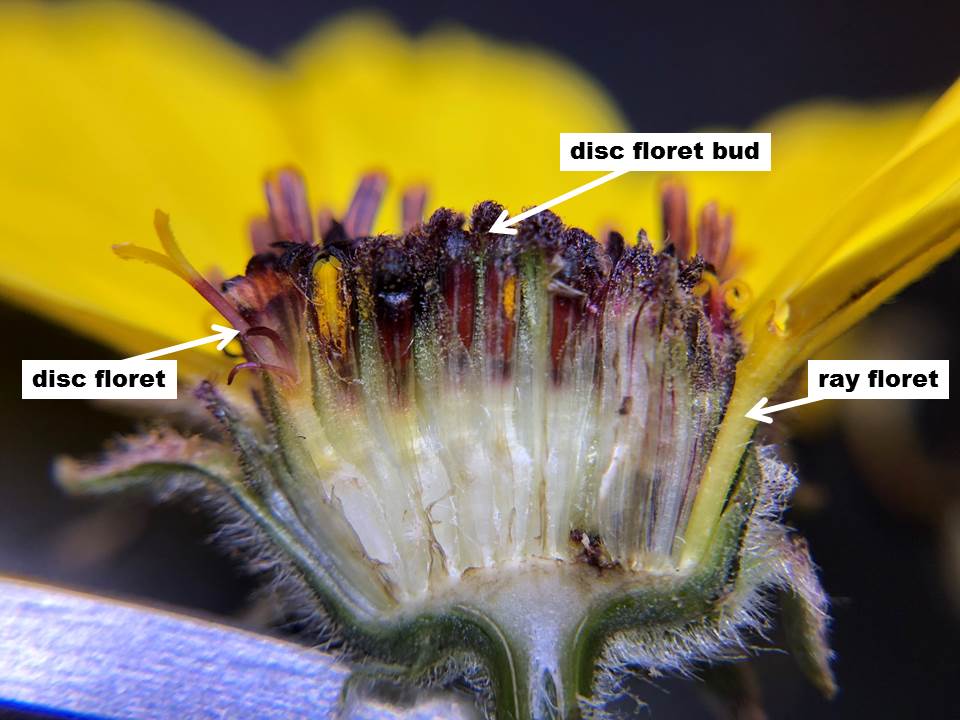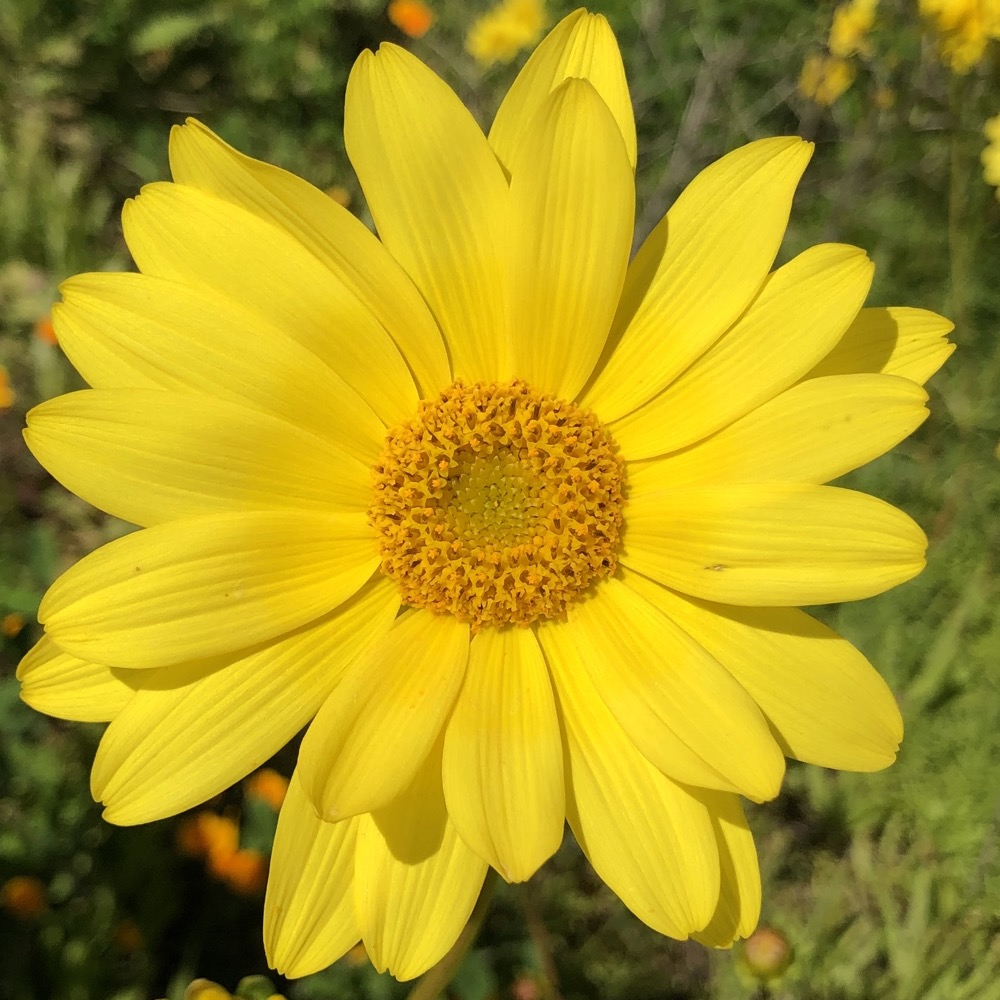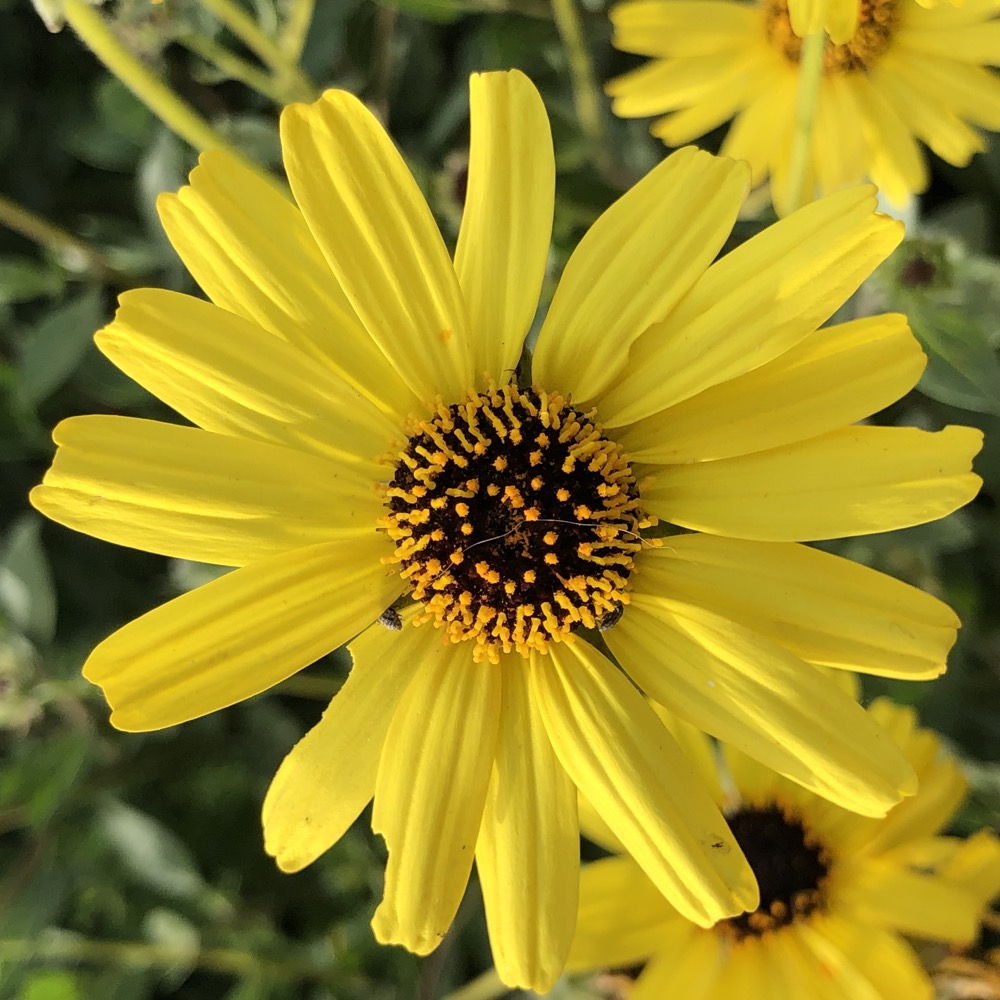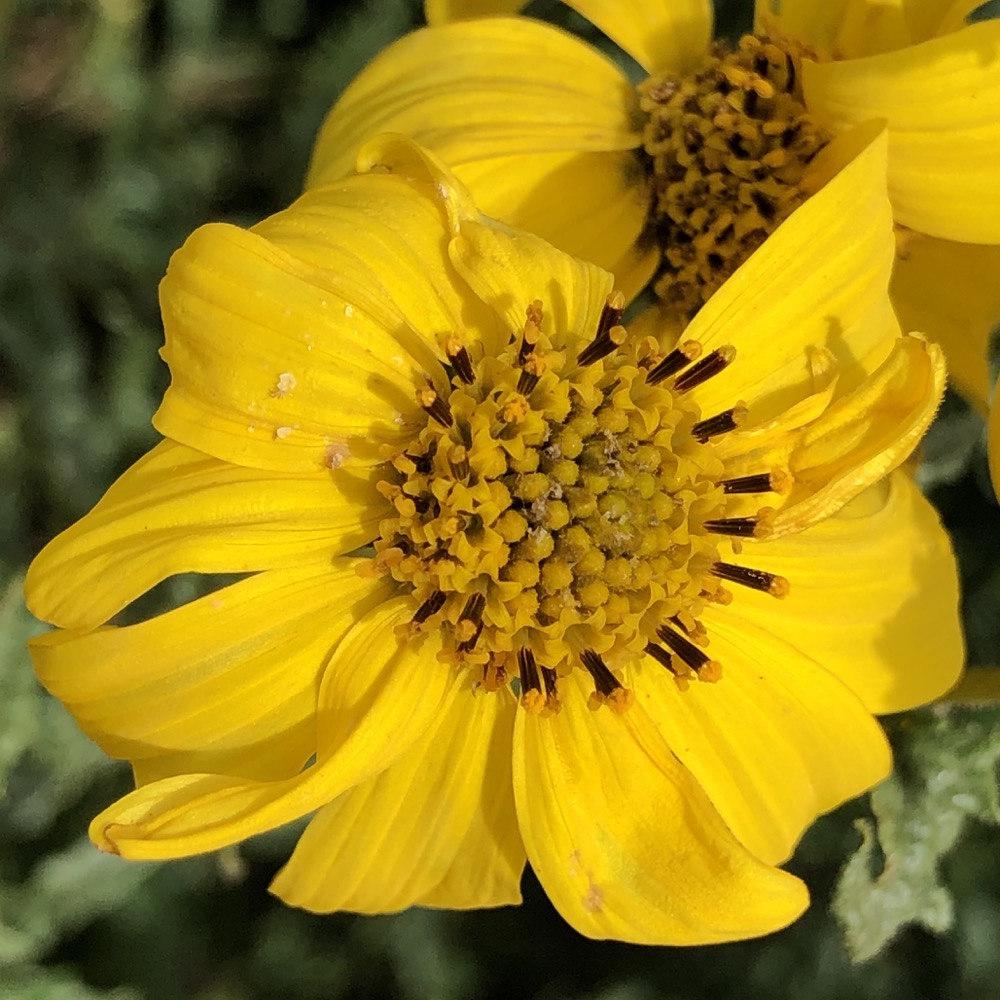 NPS Photo/Andrew Rosales – A group of Sea Dahlia near the Lighthouse.
NPS Photo/Andrew Rosales – A group of Sea Dahlia near the Lighthouse.All of these members of the family have similar characteristics that define them. What looks like a single flower, is in fact a group of small individual flowers. This group of flowers, or inflorescence, is clustered together into a compact disc (head) with each individual producing one seed. The outermost part that is seen as a petal is the ray floret. The innermost circle is made up of disc florets. Each of these will produce seeds when the buds open and are pollinated. One of the best ways to see this is to harvest a sunflower head from your garden! All of those seeds were individual flowers before pollination occurred.
 NPS Photo/Andrew Rosales – A cross-section view of the Encelia californica flower head.
NPS Photo/Andrew Rosales – A cross-section view of the Encelia californica flower head.The Sea Dahlia has long peduncles, or stems (15-30cm) that support the flower heads. The foliage is lobed and mostly linear in shape for this species and reaches about 0.1-0.8 meters in height. The flowers consist of yellow ray florets with yellow inner disc florets. The heads and ray florets are about 8-9cm in diameter. This is an endangered species in California due to the loss of coastal habitat.
 NPS Photo/Andrew Rosales – A view of the Sea Dahlia flower head.
NPS Photo/Andrew Rosales – A view of the Sea Dahlia flower head.The Bush Sunflower is about 1.5 meters in height with widely spaced green leaves. The leaves are lance-ovate shaped, or wider and rounded toward the stem and then extending out into a lance shape from this base. The flower’s head and ray florets are about 5-6cm in diameter with yellow ray florets, but with brownish inner disc florets.
 NPS Photo/Andrew Rosales – A view of the Bush Sunflower flower head.
NPS Photo/Andrew Rosales – A view of the Bush Sunflower flower head. NPS Photo/Andrew Rosales – Bush Sunflowers reach for the sky.
NPS Photo/Andrew Rosales – Bush Sunflowers reach for the sky.The San Diego Viguiera is about 0.5-1 meters in height. The lance shaped leaves are slightly toothed and can be crinkled or rolled under, giving it a twisted look. The flower’s head and ray florets are about 4-5cm in diameter with yellow ray florets and yellow inner disc florets.
 NPS Photo/Andrew Rosales – A view of the San Diego Viguiera flower head.
NPS Photo/Andrew Rosales – A view of the San Diego Viguiera flower head.On your next trip out to Cabrillo National Monument take some time to enjoy the flowers of the Asteraceae family blooming in the park. But also, be mindful that all these flowers are protected here in the park, so enjoy them on the plants where they can increase that seedbank for the next super bloom!
